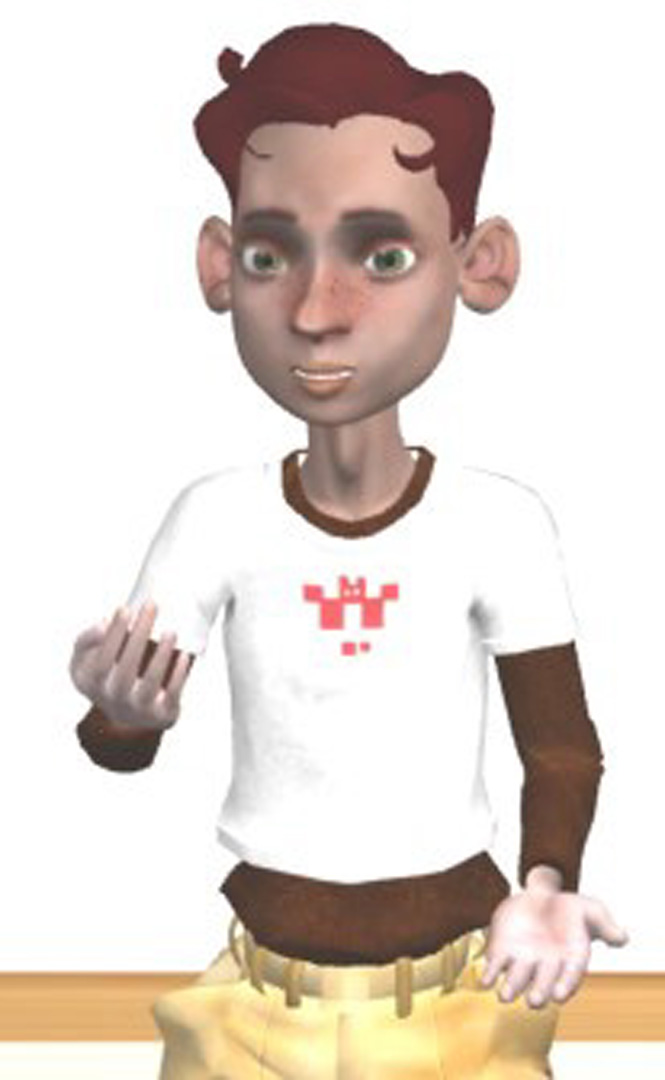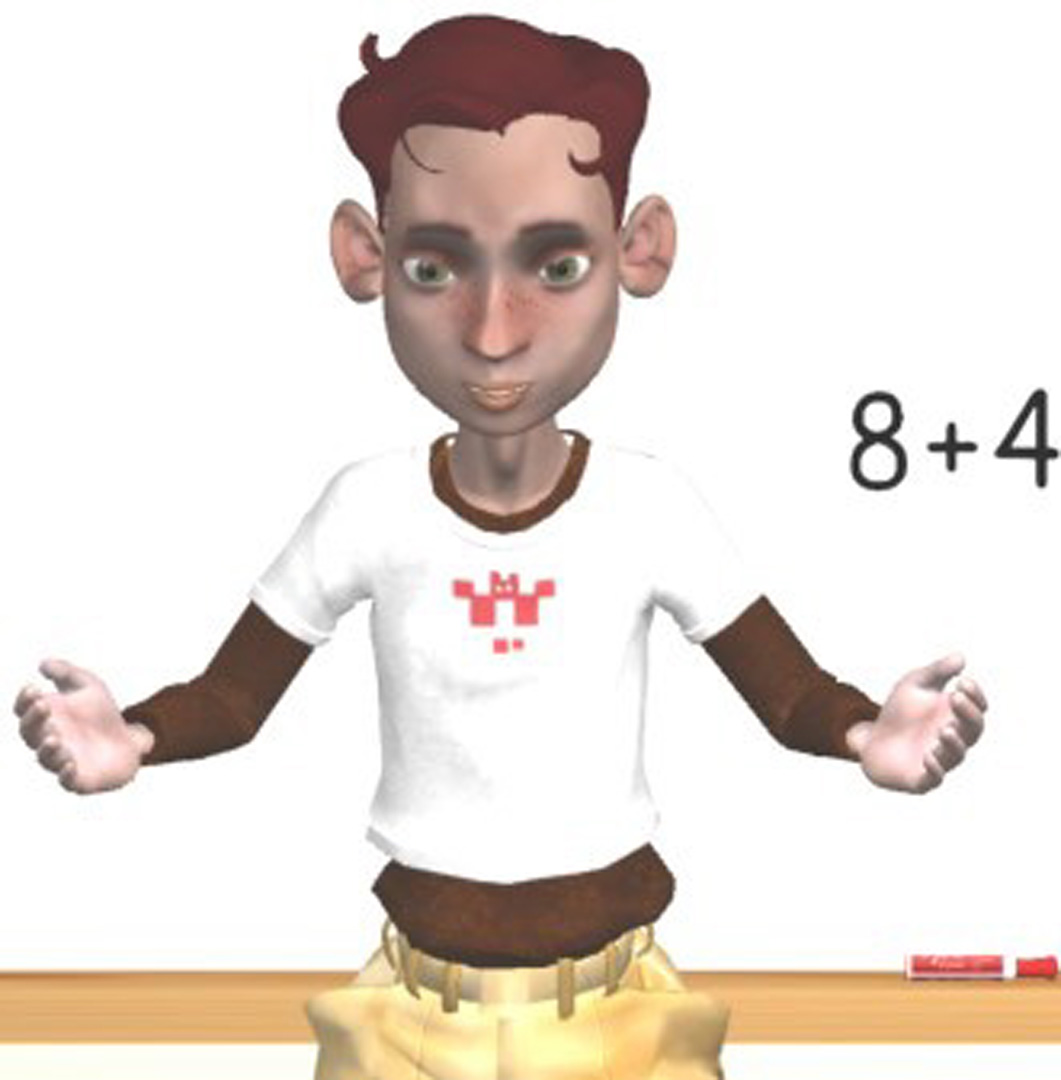“Charismatic and Eloquent Instructor Avatars with Scriptable Gesture” by Cui, Adamo-Villani and Popescu
Conference:
- SIGGRAPH 2014
-
More from SIGGRAPH 2014:


Type(s):
Title:
- Charismatic and Eloquent Instructor Avatars with Scriptable Gesture
Presenter(s):
Description:
Almost a century ago, Edward Sapir noted that we “respond to gestures with an extreme alertness” according to “an elaborate and secret code that is written nowhere, known to none, and understood by all”. Here are our vision and initial results towards breaking the code of effective instructor gestures in education.
Instructor gestures are essential in education. Pointing, circling, or underlining captures and guides the students’ attention. Complex concepts are further elucidated in gestures, which complement verbal explanations. For example, when learning mathematical equivalence, students benefit from the instructor making a balance gesture (Figure 1, left), which reminds students of their tangible experiences with the concept of equilibrium, such as from playing on a teeter-totter, or from comparing weights held in each of their hands. Gestures can also help convey instructor charisma, which engages students and ultimately enhances learning. For example, parallel outward-focused gestures convey a speaker’s extroverted and therefore appealing personality.
Traditional education research on instructor gesture has been slowed down by the difficulty of creating video stimuli that are both complex and precise. First, instructor actors cannot easily learn the scripts for multiple conditions, and any error requires an additional take. Moreover, instructor actors cannot repeat exactly the same voice intensity, voice pace, enthusiasm level, and secondary motion from one condition to the next. Paradoxically, video stimuli can appear unnatural—the instructor actor focuses on executing the script with precision as opposed to simply being a teacher and focuses on the explanations given to students.
Advances in computer graphics now allow enrolling computer animation characters as instructor avatars in education research. Instructor avatars have infinite memory and energy, and they can easily keep secondary delivery parameters constant. However, generating animation stimuli with instructor avatars has its own challenges. One challenge is that current computer animation software systems require artistic talent and technical expertise to model, animate, and control characters.
Acknowledgements:
We thank Susan Cook, Katherine Duggan, and Howard Friedman. We acknowledge funding through NSF #1217215 and ED IES # R305A130016. The opinions expressed here are those of the authors and not those of the funding agencies.





